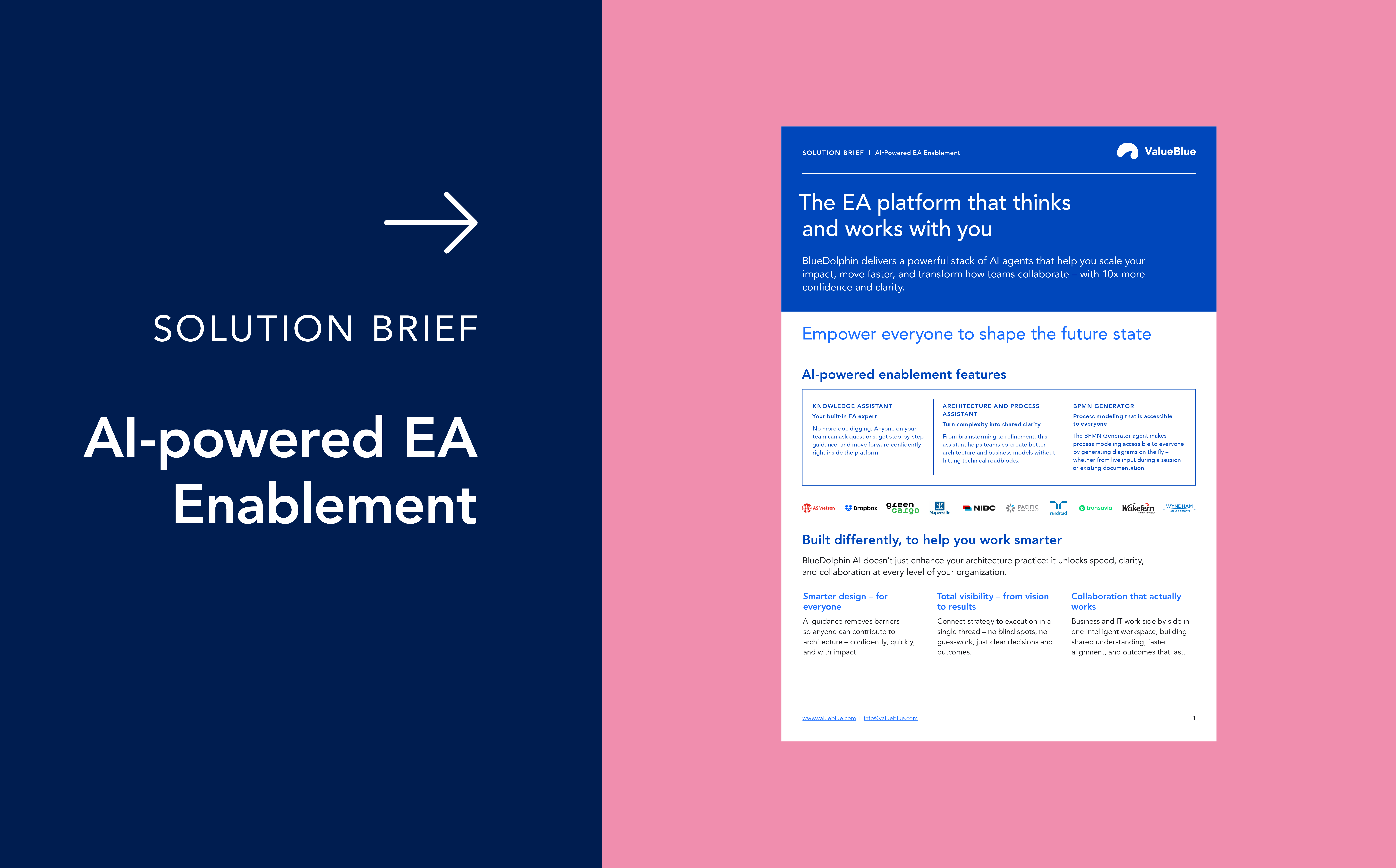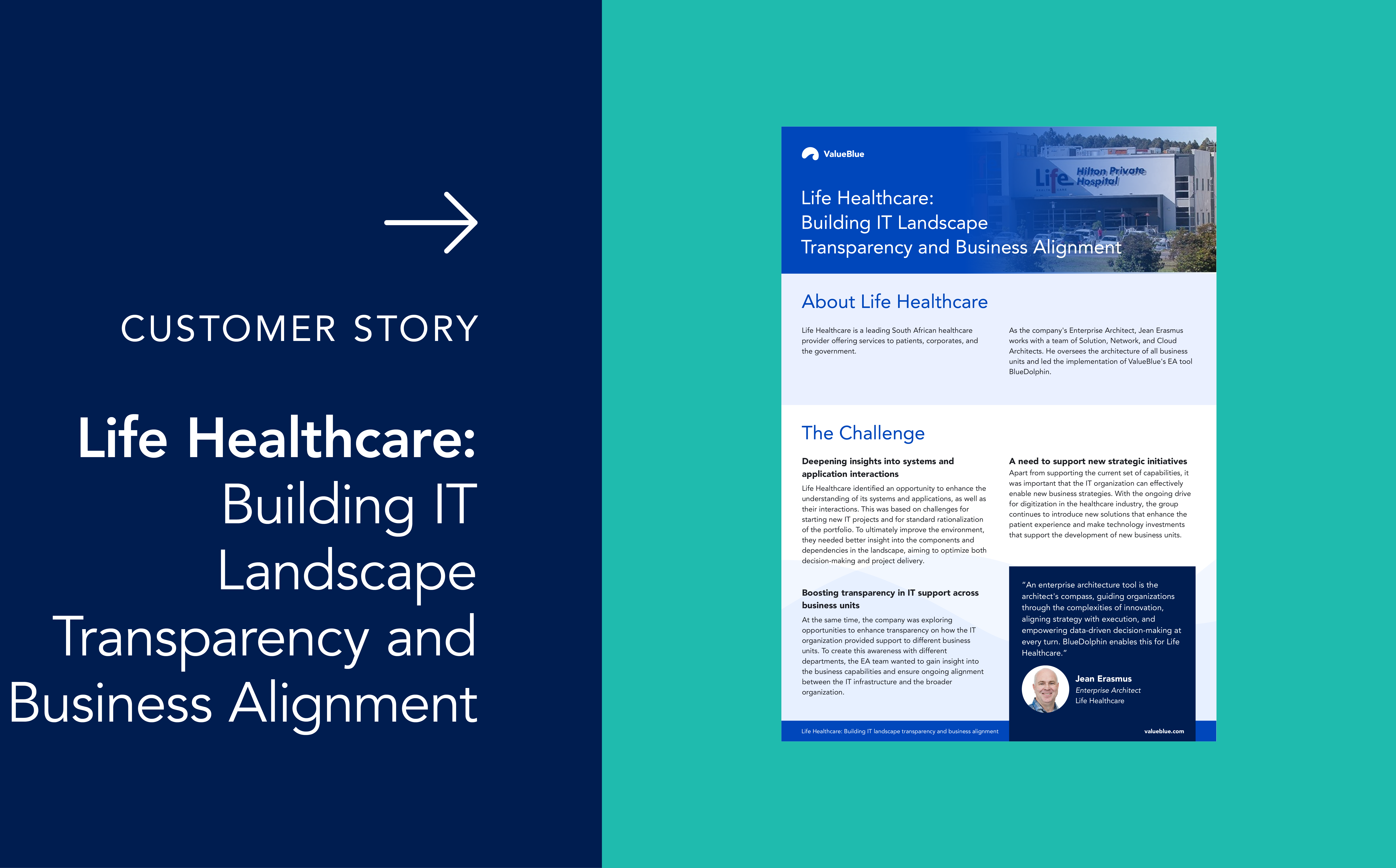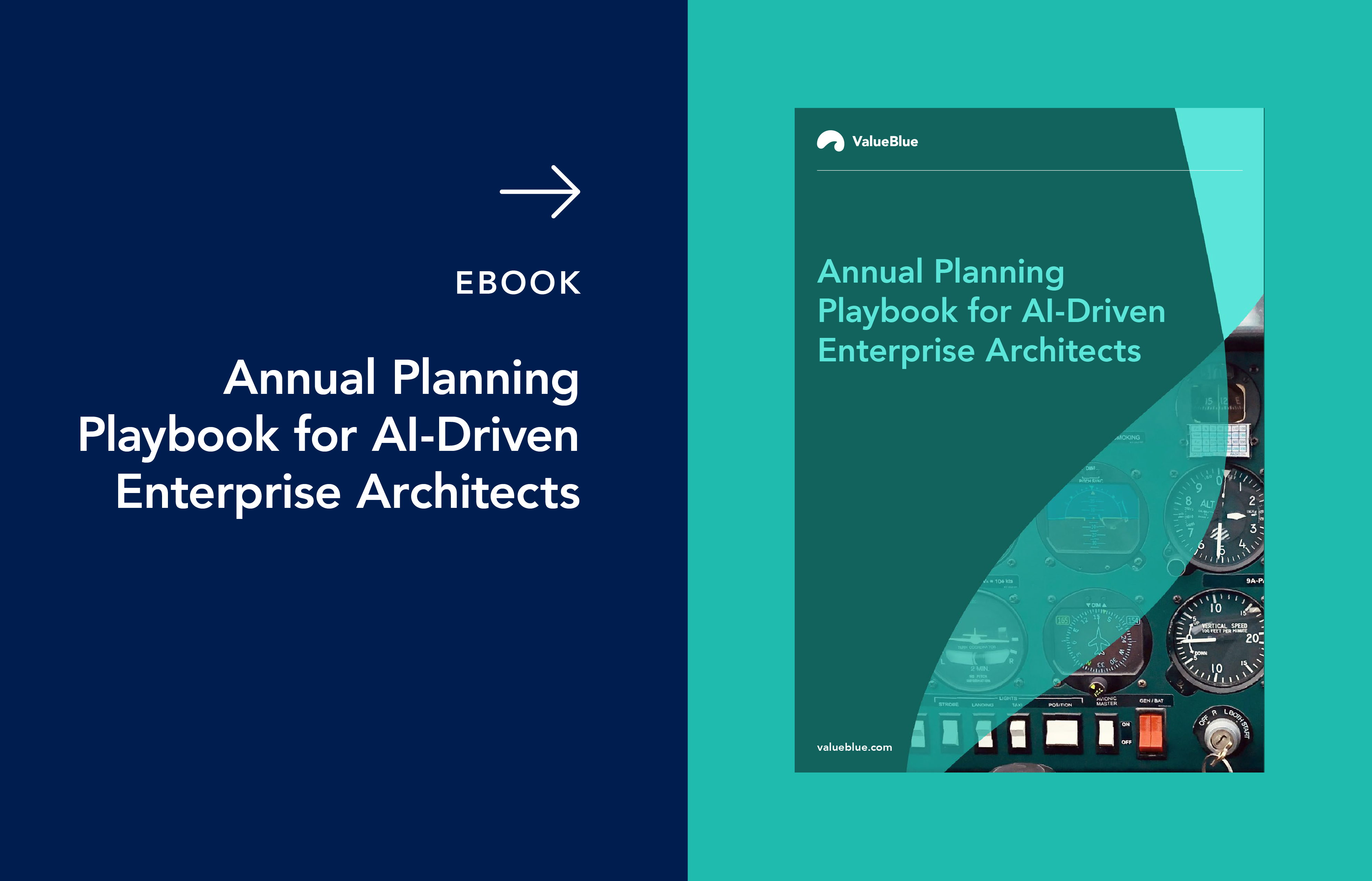5 Questions an Enterprise Architect Needs to Answer Before a Merger
If you’re an Enterprise Architect gearing up for a merger, you’re facing one of the most complex and high-stakes transformations your business can experience. Successful mergers and acquisitions (M&A) are all about creating new value, but simply signing the deal is only the beginning. The real challenge is integrating people, processes, and systems for true synergy and competitive advantage.
Enterprise Architecture isn’t just a support function in M&A. It’s an engine of strategic alignment. Without it, even the best-crafted deals risk falling apart under the weight of mismatched systems, duplicated processes, and unanticipated costs. Post-Merger Integration (PMI) is the critical phase that follows signing, during which you facilitate joining the businesses to make the merger a reality.
Table of contents
- Why start at the capability level
- Understanding Post-Merger Integration (PMI)
- 5 key questions for enterprise architects
- The role of advanced Enterprise Architecture tools
- Why security architecture matters in integration
- 4 key phases of the post-merger integration process
- Key takeaways
Why start at the capability level
When you’re talking with executives, start with the big picture: capabilities. Capability mapping isn’t about software or servers, it’s about what the business delivers to its customers. It puts everyone, from IT to the boardroom, on the same page about strengths, gaps, and strategic priorities.
Suppose you build your PMI plan from the capability perspective. In that case, you’re much more likely to spot areas where the merger offers immediate value, where to invest, and where overlap or redundancy might slow you down. Clarity here helps prevent costly surprises later.
Don’t miss out on our eBook on practical guidance on capability mapping and process relationships!
Understanding Post-Merger Integration (PMI)
It’s vital to understand what PMI really means and what you’re trying to accomplish.
Post-Merger Integration aligns everything from company culture to core technology, aiming for synergy and minimal disruption. You’re not just bolting systems together. You’re creating a new organization that should work better than either predecessor.
Depending on your strategy, you may face one of these 4 types of PMI:
- Full absorption: everything is integrated, fast, and total.
- Selective/symbiotic: only key systems or teams merge, others stay separate.
- Preservation: companies remain mostly autonomous but share best practices or governance.
- Phased/transition: integration is staged over time, allowing gradual transformation.
PMI benefits and challenges
A well-run Post-Merger Integration cuts costs by removing duplications, delivers a unified customer experience, and can supercharge operations with best-of-both-worlds capabilities.
Common roadblocks include conflicting cultures, outdated or mismatched tech you’ll need to clean up (technical debt), and the risk of missing hidden redundancies. Without effective Enterprise Architecture, these trip up even the best teams.
5 key questions for enterprise architects
Every merger is unique, but these five questions help you dig into the core integration challenges and get your organization ready.
1. What are our current and target capability maps?
How does your company’s operating model look, where are the current gaps, and what should it look like after the merger? Mapping capabilities upfront lets you see both overlaps and gaps: where to merge, which new functions to enable, and how the combination supports strategic goals. This step also helps decide which type of PMI makes sense for your organization.
2. What is the true state of our application portfolio?
Before buying licenses or rewriting code, you need a clear view of the systems you and your merger partner rely on. Is there unnecessary duplication? Are some apps obsolete or not scalable? This assessment is the bedrock of smart PMI planning. Without it, you risk wasted spend, integration headaches, and data mismatches. Portfolio analysis also uncovers which systems are mission-critical and which can go.
3. Where do our solution designs diverge or align?
Looking beyond inventories, dig into how solutions are built. How do your systems interact? Where do architectures overlap or clash? This is where Solution Design comes into play. By mapping current and future-state architectures, you reveal complexity early and create a playbook for integration. Solutions such as BlueDolphin provide tools to visualize solution designs and roadmaps, pinpointing risks and opportunities well before you invest resources.
Learn how Solution Design helps you identify gaps and complexity.
4. How do we plan to integrate and what hidden costs exist?
Post-Merger Integration is often full of surprises: technical debt, mismatched data, incompatible third-party contracts, hidden upgrade costs. All of which can stall progress and eat your budget. Build flexibility into integration plans, anticipate where processes won’t align, and budget time for resolving data mismatches. Address complexity early rather than scrambling to fix problems later.
Read about best practices to resolve these risks in real time.
5. How do we ensure support for ongoing business operations?
Even as you merge, your business can’t stop. You need to support day-to-day operations, protect continuity, and manage potential disruption. Sequence integration steps, double-check data and process matches, and set up new workflows that won’t cripple productivity. Many PMI failures come from trying to do too much, too quickly. Stay focused on operational handover and stability.
The role of advanced Enterprise Architecture tools
Application Portfolio Management is essential – but you’ll need more than a spreadsheet to master Post-Merger Integration. Solution Design tools help you model, test, and visualize integration paths before you commit resources. Roadmapping tools let you lay out a timeline for changes, track progress through PMI phases, and keep everyone aligned.
Explore our comprehensive guide to roadmapping.
BlueDolphin, for instance, includes Solution Design and robust Roadmapping, letting you understand complexity, avoid missteps, and deliver better outcomes. Advanced Enterprise Architecture platforms are your best insurance against surprises when systems, data, and teams converge.
Why security architecture matters in integration
Mergers are prime targets for security risks, especially when integrating networks and sensitive data. Overlapping systems can expose vulnerabilities, create compliance gaps, and invite threats. You need security architecture woven into every integration phase. Planning controls, aligning policies, and ensuring best practices help contain risks and protect data. Security isn’t just IT’s problem. It’s a priority.
4 key phases of the post-merger integration process
Getting PMI right means following a clear, phased approach:
- Due diligence: Assess assets, data quality, and technical risks before your merger closes. The better you know what you’re inheriting, the smoother the integration will be.
- Planning: Create an Enterprise Architecture-led integration roadmap. Map capabilities and systems, set priorities, and prep for transformation.
- Implementation: Execute technical and process integration under a clear governance structure. Use Solution Design diagrams, data migration plans, and robust coordination between IT and business teams.
- Optimization: After the main integration milestones, keep monitoring and refining. Remove legacy technology, adjust for business changes, and seek new efficiencies.
Following these phases keeps your PMI focused and flexible, reducing risk while maximizing benefits.
Key takeaways
- Enterprise Architecture is the strategic backbone of any merger – by leading M&A planning and steering post-merger integration, you prevent fallout from mismatched systems and processes.
- Starting with capability mapping keeps executive focus on real business value, ensuring that synergy and strategic goals drive your integration plan.
- Digging into application portfolios and solution designs early gives you a roadmap for integration, highlighting redundancies, risks, and opportunities for optimization.
- You must address hidden costs and business continuity by planning carefully for process alignment, data quality, and phased transitions – this is how you avoid common PMI pitfalls.
- Security architecture is critical during integration – weaving security into every stage protects data and keeps the business resilient. At the same time, advanced EA tools like BlueDolphin support every step from visualization to execution.
Start today!
If you want your merger to deliver on its promises, Enterprise Architecture must be involved from the first executive conversation through post-merger optimization. By asking the five critical questions we discussed above and connecting every decision to capability mapping, Solution Design, and Roadmapping, you give your organization every chance to succeed. Put architectural planning at the heart of your Post-Merger Integration, and you’ll avoid common pitfalls while building a foundation for growth and innovation.
Ready to get started? Book a customized demo and discover how ValueBlue's BlueDolphin can help you with a successful PMI.





